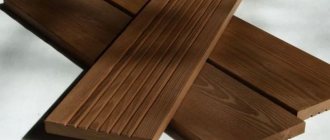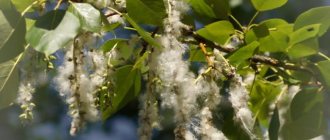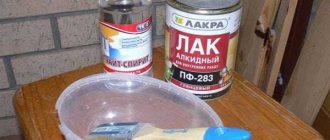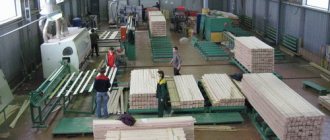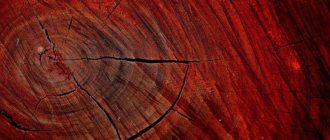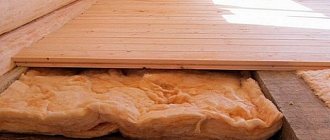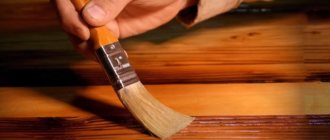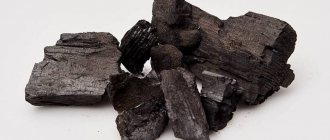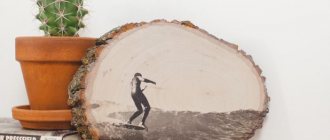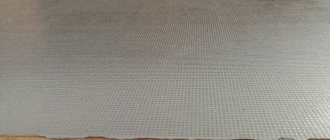Thermowood is one of the most popular finishing materials in the modern world. Heat-treated wood is wood processed using the latest technology, which, due to exposure to hot temperatures (±200°), acquires a number of unique advantages. During heat treatment, absolutely any type of wood that is traditionally used for the production of products for the home and garden can be used.
A similar technology was developed back in the 30s in Germany, and 10 years later it was studied in the USA by the best scientists of that time. But after some time, this project was abandoned, and they were able to return to it only in the early 90s. It was during this period that scientists achieved truly commendable results: with the help of modern methods developed, the essence of which was the use of high temperatures and hot steam, they managed to change the structure of wood at the molecular level. Wood processed in this way was significantly superior in quality to natural wood. Over time, Finland began to produce heat-treated wood, then France, and later Russia.
Heat-treated wood, description
Many people wonder what heat-treated wood is? These are wooden products that have undergone heat treatment at high temperatures without the addition of chemicals.
Thanks to this treatment, the tree receives many positive qualities:
- — the service life of wooden products increases;
- high quality surface of the product;- - can withstand different temperature changes;
- — practically does not dry out, unlike ordinary wood;
- - environmentally friendly material without the use of chemicals, therefore has no foreign odors;
- — heat-treated wood has low flammability and does not burn well;
- - such wood does not rot;
- - this tree will have the same tone on the cuts.
Thermowood for facades: features and advantages
Thermally modified boards for facade finishing differ significantly in properties from ordinary wood, which makes the lumber unique and in demand. The board for the facade of a house changes most of its characteristics during the thermal production process, when excess moisture and carbohydrate components are removed from the wood under the influence of high temperatures. The structure of the material itself changes, making the fibers impervious to moisture and the influence of biological factors. Cladding boards for thermowood facades:
- Does not absorb water - all drops falling on the surface of the wood simply roll off it.
- It is lightweight due to the restructuring of fibers during the thermal modification of wood.
- Does not deform - maintains stability of size and shape throughout its entire service life.
- It has high mechanical strength - the hardness of the material increases due to changes in the density and structure of the wood.
- It is distinguished by increased attractiveness - the appearance of heat-treated wood is comparable to the texture of elite wood species.
- Remains environmentally friendly - the technology eliminates the use of chemical components, leaving thermowood safe for humans and the environment.
Based on the acquired properties, it can be argued that finishing with facade boards guarantees naturalness, decorativeness, as well as amazing durability of the external walls of any home.
Wood thermal treatment technology
This technology was invented by Finnish specialists.
It consists of several processing stages:
- - first, the wood is dried by placing it in a drying chamber for a long time at a temperature of 100-300 degrees. At this stage of processing, all moisture is removed from the wood;
- - heat treatment - for such treatment, hot steam is released into the chamber where the wood is located, the temperature there is above 250 degrees.
IMPORTANT! Heat treatment takes about 3 hours. Finally, the heat-treated wood is cooled, reducing the temperature in the chamber, the humidity of the product is 4-6%.
There are different heat treatments:
- — single-stage;
- - multi-stage - with this treatment, steam is supplied under a certain pressure.
IMPORTANT! To produce thermowood of the highest quality, not air steam, but nitrogen is supplied under pressure (rectification is done). Wood may differ in appearance, shade and properties if treated with different steam temperatures, therefore its price will be different.
Therefore, it is divided into classes:
- — first class — steam treatment up to 190°C, the shade changes slightly, the properties are improved to a minimum;
- - second class - steam treatment up to 210 ° C, the shade turns out darker, the strength of the wood increases, and also the resistance to the rotting process becomes higher;
- - third class - steam treatment up to 240°C, the wood has rich dark shades, here all properties are increased to the maximum (strength, stability, density).
IMPORTANT! Before buying thermal wood, check what class it is and decide what shade you need it for construction.
How to make heat-treated wood at home yourself?
Buying thermally treated wood is not difficult, for example, buy in St. Petersburg or buy in Moscow; it is now sold everywhere. But usually only in specialized stores. Only the cost is much higher than for ordinary wood. Therefore, many craftsmen often ask this question - how can you make such wood with your own hands at home?
If you really want to do this, it is possible. Only the process of making thermowood is very labor-intensive, but the result is worth it.
To make a thermal chamber we will need the following elements:
- a container that will be closed very tightly so that air cannot penetrate there under any circumstances when processing wood (it will serve as the chamber itself);- — decide how this container will be heated (electricity, gas or solid fuel);
- - select a container for water to create the desired level of humidity inside the main container;
- — for all procedures you will need a tool for working with metal.
A container of water is placed in the thermowood chamber to allow water to evaporate due to the high temperature. This will prevent the wood from catching fire. To maintain a high temperature, the chamber must be well heated.
IMPORTANT! The chamber must be sealed tightly, because if oxygen gets in there, there is a risk of wood fire.
This option is suitable if you need to process large-sized wooden products. For processing small pieces of wood, there is another way to do it yourself. Take wood, boil it for 1.5 hours, then wrap it in rags or paper and dry these wooden products near a stove, radiator or heater.
The emergence of thermotree
Thermal wood gained its value due to its unique qualities, such as environmental friendliness, good physical and mechanical properties and low cost. Like any other material of natural origin, wood is susceptible to a number of different damage, both biological and mechanical. It has been known since ancient times that wood can be treated to give it resistance to rot, flexibility, hardness or the desired color. Plenty of methods have been tried. Well-known and, one might say, traditional are drying and soaking. Over time, these types of procedures have become outdated and have been replaced by newer, modern options, such as staining, impregnation with oil or varnish, mixing with polymer compounds and antiseptics.
The main reason for the rotting of any wood is the polysaccharides contained inside, which are a breeding ground for biological organisms. As follows from the above, specially developed chemical compositions based on salts of heavy metals previously served as an excellent means for their neutralization. Wood treated in this way lasted for about 30 years. But numerous studies have confirmed that in addition to the effective result, such compositions cause significant harm to health, causing severe symptoms. It is for this reason that in 2004 it was decided to ban this kind of processing throughout the European Union. The time is coming when traditional ideas about wood as a building material are complemented by a new vision. Progress does not stand still and modern society is looking for safer and more natural ways to process wood. This method was found, and the result obtained was called “thermowood”.
Use of heat-treated wood
Due to its positive qualities, thermowood is a universal material. It can be used in the construction of a garden gazebo and terrace. Looks great as an external finishing material for the facade of a house, and can also serve as a floor covering.
Facade thermowood - presented in the form of lining, block house. The beautiful appearance of such products lasts a long time and does not require much care.
In wet rooms (sauna, bathhouse) we can also often see the use of thermal boards. It does not heat up much and is not afraid of humidity.
Although heat-treated wood has many advantages, it also has a disadvantage - under the influence of sunlight, the surface fades over time and the shade becomes gray. But only the very top layer is damaged; inside it remains strong. In order to prevent fading, you can additionally treat the thermowood with oil products. After which such wood will serve you for a long time and delight the eye with its beautiful appearance.
Another drawback is, of course, the cost of such wood, but we have described to you the opportunity to make it yourself, which will be much more profitable.
How to choose a thermal board for facades
Facade thermal boards are available in different types of lumber. Most often, planken is used for finishing, but you can also decorate the external walls of the house with clapboard or imitation timber.
Buyers often have a question about which version of thermowood to prefer. And although all thermally modified wood has an excellent list of characteristics, for facades it is recommended:
- thermal book;
- thermo maple;
- thermoalder;
- thermal fir.
The listed wood species have a low dead weight, which makes it possible to obtain surprisingly light material from them. This means that when installing lining boards or planks, they will not require additional methods of fastening and will not put excessive load on the walls of the house. Also, thermally modified varieties of hardwood have an attractive appearance and do not require special care during operation.
Thermowood for the facade is a reliable cladding for many years.
